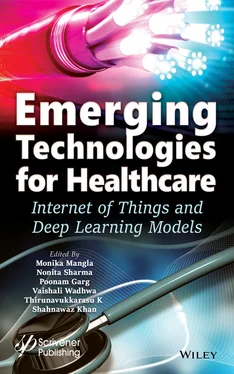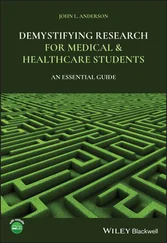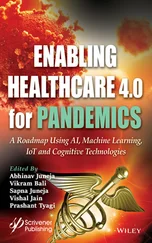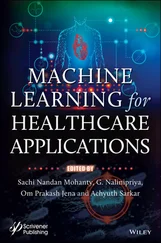Moodables are devices which enhances the mood of a person by sending triggering signals to the brain. These devices must be worn on head which has inbuilt sensors to elevate the mood.
These are like small pills which can be ingested to monitor our body from inside and can give warning signals to the doctors in case of any abnormalities. This device is made up with sensors of pill size which can give warning for any underlying diseases. These sensors can detect whether the prescribed medicines are taken properly and also can help in drug management.
Computer vision technology mimics the human vision by making use of Artificial Intelligence. This technology has been implemented in drones which help them to navigate and detect obstacles. Visually impaired people can make use of this technology to navigate easily.
1.3.5 Charting in Healthcare
IoT devices helps doctors to maintain the patient data in an efficient manner. Doctors can easily get the charting of various parameters like blood pressure and sugar level from the connected devices and it can be immediately reviewed and shared with the patient’s devices. This saves huge amount of time that doctors spend in creating manual charts for individual patients.
Various benefits of IoTs are discussed in this section.
As the doctors can remotely monitor the patients using IoT-enabled devices, the cost in visiting the healthcare facilities and consultation can be drastically reduced. Since the real-time monitoring of the patients is possible with IoT devices, hospital admissions can also be reduced by providing timely treatments.
1.4.2 Quick Diagnosis and Improved Treatment
Doctors can easily diagnose the diseases as real-time monitoring is possible with IoT devices and can give appropriate treatment on time at an early stage. Patients can also be fully aware about their health conditions and the treatments provided. Hence, the transparency in treatment can also be maintained. Doctors can provide proactive treatment to the patients based on the real-time data collected.
The continuous monitoring of patients helps to save many lives during emergency medical situations which arise due to heart attacks, asthma attacks, high blood pressure, etc.
1.4.3 Management of Equipment and Medicines
It is very important for the hospitals to manage the healthcare equipment as the utilization of those equipment should be optimized. Through IoT connected devices, it will be easier to manage the equipment as the utilization of the equipment is properly monitored on real-time basis and the equipment which are available for use at a particular time can be easily identified with the location of the equipment. Similarly, the medicine stocks can also be properly monitored using IoT devices.
As the real-time data is continuously collected through IoT devices, decision-making becomes much easier which helps in the smooth functioning of the healthcare systems. This not only saves the time but also reduces the cost of operation.
1.4.5 Data Assortment and Analysis
Huge amount of data is collected by IoT devices. These data can be used for analysis purposes. As IoT devices collect and analyse the data, storing of manual records is not required. The data is available on real time and stored in cloud and can be made available to the healthcare professionals or patients. The error in analysis can be eliminated compared to the manual analysis.
1.4.6 Tracking and Alerts
The patients are connected to IoT devices so that the doctors can keep track of their health on real-time basis. Doctors get alerts on life threatening emergency situations which enables them to take proper decisions and provide right treatments with better accuracy.
1.4.7 Remote Medical Assistance
In an emergency, patients can contact doctors through connected devices irrespective of the location which enables them to avoid the hospital visits and un-necessary expenses. Doctors will be able to check the patients online and prescribe the medicines. In future, delivery chains are aiming to provide machines which can distribute medicines to the patients based on their data available through the connected devices.
Various challenges faced by the IoT devices are discussed in this section.
1.5.1 Privacy and Data Security
Data security and privacy are the most crucial challenges of IoT devices. As huge amount of data is generated through the connected devices, it is highly susceptible to cybercrimes. Without proper data security and protocols, personal data of patients as well as doctors can be hacked and misused. Fake IDs may be created by cyber criminals which can be used for fake insurance claims and businesses.
1.5.2 Multiple Devices and Protocols Integration
Various devices of different manufacturers must be interconnected for the implementation of IoT. As there are no standardized communication protocols to be followed by the manufacturers, integration of multiple protocols becomes difficult and it will hinder the operation of these devices. Also, the system may become more complicated. This may result in an inefficient system if standardized communication protocols are not in place.
1.5.3 Huge Data and Accuracy
A huge amount of data is generated by the IoT devices. As the number of devices increases, the data generated also will increase. If huge amount of data is generated, it will be difficult for the doctors to analyse the data and take proper decisions which, in turn, may affect the accuracy.
Even though the use of IoT devices in health sector is increasing day by day, still the development is not up to the mark. It is still in development stage only. It has to progress in a faster pace for better results.
1.5.5 Updating the Software Regularly
With the implementation of hardware for IoT devices, software also becomes part of the system. It has to be regularly updated for better performance and added security features. Regularly monitoring and updating the software is required which may not be possible easy at times.
1.5.6 Global Healthcare Regulations
For every new technology implementation, proper approval from healthcare regulating bodies is required. But formulations of new regulations are not done very frequently and is a time-consuming process which may cause difficulty in implementation of new technologies and innovations.
The cost of healthcare facilities in developed countries is high compared to the developing countries. With the use of IoT devices, cost is not reduced for using the healthcare facilities. It must be made cost effective then only it can benefit the common man.
Disadvantages of IoT is discussed in this section.
As IoT devices operates hugely on personal data, serious security issues can happen due to hacking which may result in data theft. So, there should be proper security and firewalls in place which may require additional expenses.
1.6.2 Access by Unauthorized Persons
As the real-time sensitive data is available in connected devices, the access to those data needs to be protected. Proper care should be taken to ensure that the data is accessed by authorized persons only. Unauthorized access may create data leaking and misuse of the data.
Читать дальше












